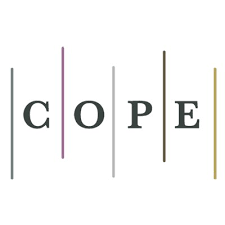Designing a combined Markov-bayesian model in order to predict stock prices in the stock exchange
DOI:
https://doi.org/10.59615/ijimes.3.2.33DOR:
https://dorl.net/dor/20.1001.1.27832678.2023.3.2.4.0Keywords:
stock price, Bayesian networks, Markov model, Stock exchangeAbstract
Investing in shares offered on the stock exchange is one of the most profitable options in the capital market. The stock market has a non-linear and chaotic system that is influenced by political, economic, and psychological conditions. Forecasting time series, such as stock price forecasting, is one of the most important problems in the field of economics and finance because the data is unstable and has many variables that are influenced by many factors. There are many ways to predict stock prices. Non-linear intelligent systems such as artificial neural networks, fuzzy neural networks, and genetic algorithms can be used to predict stock prices. In this research, a hybrid system based on Bayesian networks and the Markov model is proposed to predict the daily trend of the stock market. Bayesian networks are used to specify relationships between variables in forecasting. Finally, the Markov model is used to predict the market trend in the sets extracted from the Bayesian network. The evaluation criteria in the proposed system show the high efficiency of this method.
Downloads
References
Gupta, A., & Dhingra, B. (2012, March). Stock market prediction using hidden markov models. In 2012 Students Conference on Engineering and Systems (pp. 1-4). IEEE.
Abhishek, K., Khairwa, A., Pratap, T., & Prakash, S. (2012, July). A stock market prediction model using Artificial Neural Network. In 2012 Third International Conference on Computing, Communication and Networking Technologies (ICCCNT'12) (pp. 1-5). IEEE.
ElAal, M. M. A., Selim, G., & Fakhr, W. (2012). Stock market trend prediction model for the Egyptian stock market using neural networks and fuzzy logic. In Bio-Inspired Computing and Applications: 7th International Conference on Intelligent Computing, ICIC 2011, Zhengzhou, China, August 11-14. 2011, Revised Selected Papers 7 (pp. 85-90). Springer Berlin Heidelberg.
Wang, L., Wang, Z., Zhao, S., & Tan, S. (2015). Stock market trend prediction using a dynamical Bayesian factor graph. Expert Systems with Applications, 42(15-16), 6267-6275.
Lee, J., & Shin, M. (2009). Stock Forecasting using Hidden Markov Processes. ht tp://cs229. Stanford. edu/proj2009/ShinLee. pdf.
Turner, C. M., Startz, R., & Nelson, C. R. (1989). A Markov model of heteroskedasticity, risk, and learning in the stock market. Journal of Financial Economics, 25(1), 3-22.
Ghahremani-Nahr, J., Aliahmadi, A., & Nozari, H. (2022). An IoT-based sustainable supply chain framework and blockchain. International Journal of Innovation in Engineering, 2(1), 12-21.
Gharachorloo, N., Nahr, J. G., & Nozari, H. (2021). SWOT analysis in the General Organization of Labor, Cooperation and Social Welfare of East Azerbaijan Province with a scientific and technological approach. International Journal of Innovation in Engineering, 1(4), 47-61.
Fallah, M., Sadeghi, M. E., & Nozari, H. (2021). Quantitative analysis of the applied parts of Internet of Things technology in Iran: an opportunity for economic leapfrogging through technological development. Science and technology policy Letters, 11(4), 45-61.
Nozari, H., Ghahremani-Nahr, J., & Szmelter-Jarosz, A. (2022). A multi-stage stochastic inventory management model for transport companies including several different transport modes. International Journal of Management Science and Engineering Management, 1-11.
Nguyen, H. (2023). An empirical application of Particle Markov Chain Monte Carlo to frailty correlated default models. Journal of Empirical Finance, 72, 103-121.
Liu, W., Suzuki, Y., & Du, S. (2023). Forecasting the Stock Price of Listed Innovative SMEs Using Machine Learning Methods Based on Bayesian optimization: Evidence from China. Computational Economics, 1-34.
Bouteska, A., Sharif, T., & Abedin, M. Z. (2023). COVID-19 and stock returns: Evidence from the Markov switching dependence approach. Research in International Business and Finance, 101882.
Nugroho, D. B., Wicaksono, B. A., & Larwuy, L. (2023). GARCH-X (1, 1) model allowing a non-linear function of the variance to follow an AR (1) process. Communications for Statistical Applications and Methods, 30(2), 163-178.
Alaminos, D., & Salas, M. B. (2023, January). Tourism Stock Prices, Systemic Risk and Tourism Growth: A Kalman Filter with Prior Update DSGE-VAR Model. In Artificial Intelligence and Soft Computing: 21st International Conference, ICAISC 2022, Zakopane, Poland, June 19–23, 2022, Proceedings, Part II (pp. 167-181). Cham: Springer International Publishing.
Yuanfang, Z. (2023). Optimization of financial market risk prediction system based on computer data simulation and markov chain monte carlo.
Konstantakis, K. N., Melissaropoulos, I. G., Daglis, T., & Michaelides, P. G. (2023). The euro to dollar exchange rate in the Covid‐19 era: Evidence from spectral causality and Markov‐switching estimation. International Journal of Finance & Economics, 28(2), 2037-2055.
Published
How to Cite
Issue
Section
License
Copyright (c) 2023 Azam hajiaghajani

This work is licensed under a Creative Commons Attribution 4.0 International License.












